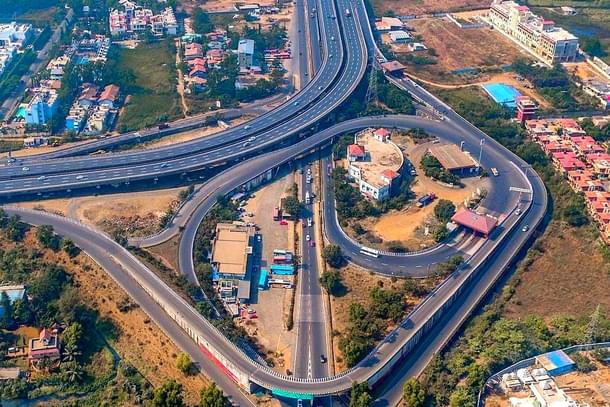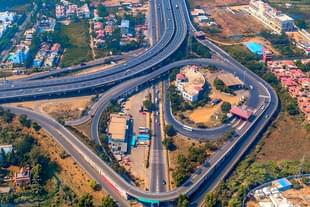Infrastructure
India Fast-Tracks 208 Mega Projects Worth 15 Lakh Crores Under PM GatiShakti Across Road, Railway And Energy Sectors
V Bhagya Subhashini
Oct 14, 2024, 10:44 AM | Updated 10:51 AM IST
Save & read from anywhere!
Bookmark stories for easy access on any device or the Swarajya app.


India is making significant strides in boosting its infrastructure capabilities with the recommendation of 208 large-scale infrastructure projects valued at Rs 15.39 lakh crore under the ambitious PM GatiShakti initiative.
These projects are recommended by the Network Planning Group (NPG) which was constituted under the PM GatiShakti initiative.
Launched in October 2021, this initiative is designed to enhance multi-modal connectivity across the country, with a focus on integrated infrastructure development to cut logistics costs and streamline investments across multiple sectors.
According to Amardeep Singh Bhatia, Secretary of the Department for Promotion of Industry and Internal Trade (DPIIT), the projects include investments from a variety of ministries, including roads, railways, urban development, and oil and gas.
Of the total projects, 101 focus on road development, 73 on railway infrastructure, 12 on urban development, and four in the oil and gas sector, according to Business Standard report. Each sector plays a critical role in ensuring India's connectivity, energy security, and urban transformation.
PM GatiShakti's Broader Vision
The PM GatiShakti initiative, with its National Master Plan (NMP), integrates over 1,600 layers of geospatial data, making it easier for planners to create efficient, data-driven designs. This includes data on land records and both physical and social infrastructure.
One of the core goals is to accelerate project planning and execution by removing bottlenecks in the logistics chain. This holistic approach ensures that infrastructure investments are aligned, reducing redundancies and encouraging inter-ministerial cooperation.
The initiative has already identified 156 critical infrastructure gaps, particularly in areas related to ports and the movement of essential bulk commodities like coal, cement, and food grains. Addressing these gaps is seen as essential to improving the efficiency of the supply chain, which remains a significant factor in India's goal to become a $5 trillion economy.
The projects are being evaluated by the Network Planning Group (NPG), an inter-ministerial body that meets every two weeks to assess proposals. Projects that exceed Rs 500 crore are reviewed by the NPG before being sent to the Public Investment Board (PIB) or the Department of Expenditure for final approval.
This process ensures that major investments are subjected to rigorous scrutiny, enhancing transparency and accountability in public spending.
International Interest and Future Expansion
In a promising development, the success of the GatiShakti initiative has garnered international attention, with Nepal and Sri Lanka expressing interest in adopting the model. Discussions with Sri Lanka are reportedly underway, and this signals the potential for India's infrastructural planning expertise to have a broader regional impact.
Bhatia also revealed plans for the initiative to expand to the district level within the next two months, a move that will ensure that the benefits of integrated infrastructure development trickle down to local economies, providing a more inclusive growth model.
Key Challenges Ahead
Despite the promising outlook, there are significant challenges that need to be addressed.
The integration of land record data, for instance, remains a complex task, particularly given India's vast and varied geography. The collaboration between central and state governments is crucial, but differing priorities and bureaucratic hurdles at the state level can slow down implementation.
Moreover, while the initiative is focused on multi-modal connectivity, aligning the pace of development across different sectors—such as roads, railways, and urban infrastructure—requires meticulous planning and coordination.
Ensuring that all stakeholders, including private investors, remain aligned with the broader national goals will also be critical for the long-term success of the initiative.
V Bhagya Subhashini is a staff writer at Swarajya. She tracks infrastructure developments.




